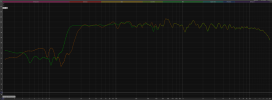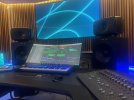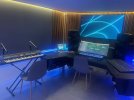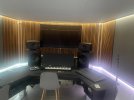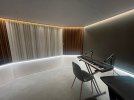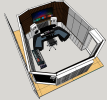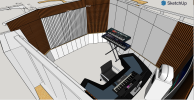I wish manufacturers treat their prospective customers decently and update their websites.M2 got skipped and became the M3
See here … https://www.audiosciencereview.com/.../ggntkt-m3-yes-m3-formerly-known-as-m2.14656/
-
Welcome to ASR. There are many reviews of audio hardware and expert members to help answer your questions. Click here to have your audio equipment measured for free!
You are using an out of date browser. It may not display this or other websites correctly.
You should upgrade or use an alternative browser.
You should upgrade or use an alternative browser.
$30K Budget - On the quest for my "end game" speaker
- Thread starter MKR
- Start date
- Status
- Not open for further replies.
- Thread Starter
- #962
Agree, but I think Roland is a bit of a one man show and taking all of his time and effort to get the M3 released, not much bandwidth to get the website updated. I will say he has been very responsive to my direct messages asking about the M3, so good treatment of a prospective customer in that sense.I wish manufacturers treat their prospective customers decently and update their websites.
The problem with one man companies is the longevity of support. An intelligent young person with good intentions is a good way to start a company but by now one expects there is a structure in place instead of what looks like working from home. Four years is a long time for a company to get established properly.Agree, but I think Roland is a bit of a one man show and taking all of his time and effort to get the M3 released, not much bandwidth to get the website updated. I will say he has been very responsive to my direct messages asking about the M3, so good treatment of a prospective customer in that sense.
As a young guy myself - $30k is a lot. This thread has pages and pages so I doubt I'd be helpful. From a lot of the videos and equipment I've watched - endgame.. it almost seems equivalent as a function of time, for me at least. So if I'd be choosing something 'endgame' regardless of the highest achievement in audio or price, It'd have to last.. that is - the enjoyment, the happiness, the intricate facets, the praise from others should last. I feel it is hard to achieve or at least - I have an inkling that if I'd be buying myself an 'endgame' setup - I'd still feel inclined in purchasing the new stuff. The endgame might prevail but surprises will be very welcome down the road.
- Thread Starter
- #965
I did consider Meyer initially, but dropped as they are just not very conducive to a typical home environmentMeyer sound acheron series and/or X10 may be worth an audition as well. Blue horns would be out of budget I believe
- Thread Starter
- #966
Just discovered these … anyone have any direct experience with below offerings from Starke Sound?
 www.starkesound.com
www.starkesound.com
 www.starkesound.com
www.starkesound.com
 www.starkesound.com
www.starkesound.com
Almost no measurements or reviews that I can find except the below …
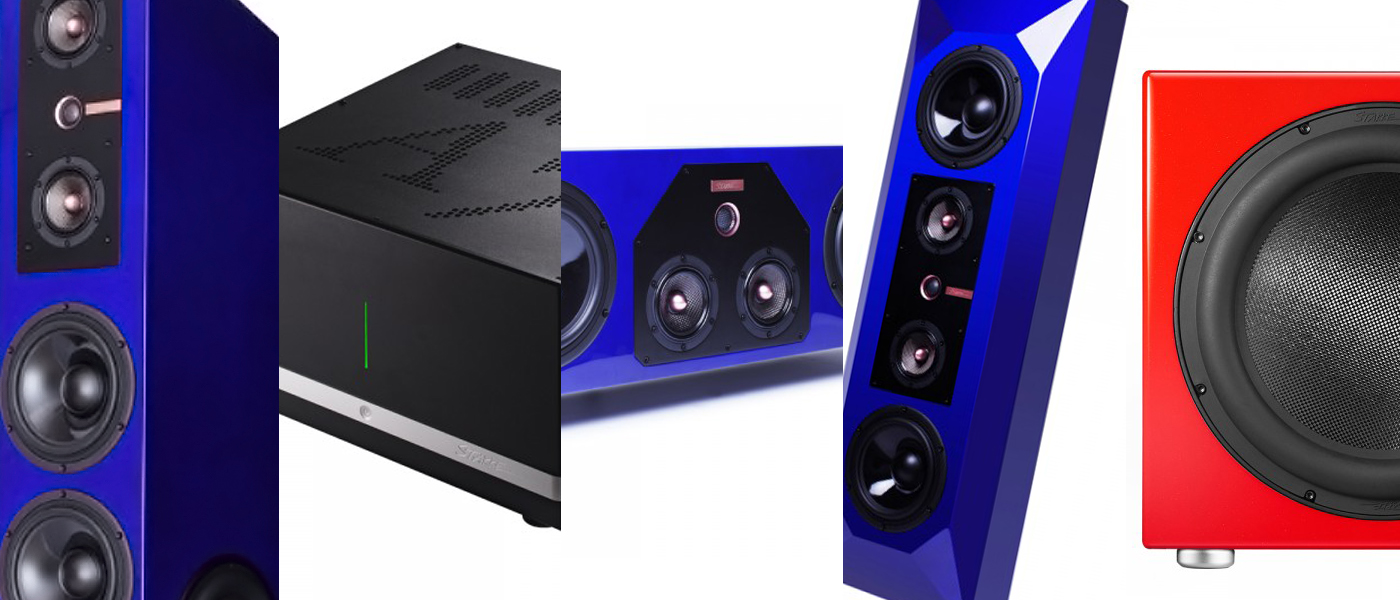
 hometheaterhifi.com
hometheaterhifi.com
Product Details
Product Details
Product Details
Almost no measurements or reviews that I can find except the below …

Starke Sound Halo Elite 5.1 Home Theater Speaker System Review - HomeTheaterHifi.com
Looking for a home theater speaker system that makes a statement in both the visual and aural sense? Then the fine folks at Starke Sound have an impressive looking system to tempt both your eyes and ears!
steve59
Major Contributor
- Joined
- Dec 18, 2019
- Messages
- 1,069
- Likes
- 782
My neighbors, coworkers and most friends and family just shake their head at my stereo fixation, even one who after hearing my system went out and spent close to double on a stereo of his own was confused what to do next, he said what do you do now, sit and listen?As a young guy myself - $30k is a lot. This thread has pages and pages so I doubt I'd be helpful. From a lot of the videos and equipment I've watched - endgame.. it almost seems equivalent as a function of time, for me at least. So if I'd be choosing something 'endgame' regardless of the highest achievement in audio or price, It'd have to last.. that is - the enjoyment, the happiness, the intricate facets, the praise from others should last. I feel it is hard to achieve or at least - I have an inkling that if I'd be buying myself an 'endgame' setup - I'd still feel inclined in purchasing the new stuff. The endgame might prevail but surprises will be very welcome down the road.
dieselmilk
Member
- Joined
- Jan 24, 2020
- Messages
- 39
- Likes
- 34
Your neighbor dropped $100k on a whim?My neighbors, coworkers and most friends and family just shake their head at my stereo fixation, even one who after hearing my system went out and spent close to double on a stereo of his own was confused what to do next, he said what do you do now, sit and listen?
Holmz
Major Contributor
Your neighbor dropped $100k on a whim?
Gated…
Holmz
Major Contributor
Did you ever decide on active versus passive?
And what other equipment is being carried over? If any?
And what other equipment is being carried over? If any?
steve59
Major Contributor
- Joined
- Dec 18, 2019
- Messages
- 1,069
- Likes
- 782
at that time i had $3500 in speakers and $2k in electronics, yea he went out and dropped over $10k in hifi early 90's moneyYour neighbor dropped $100k on a whim?
benanders
Senior Member
@MKR (AND everyone else whose participation in this thread dragged me out of lurker-only ASR status) - happy New Year!
Not expecting to close the account on your DIY query with my comment here, but, as many truly future-proofed (=useful to many Googlers in the long-term) threads will do, this one has spun off another very useful thread - congratulations on that! Link here, for convenience:

 www.audiosciencereview.com
www.audiosciencereview.com
MKR, to be honest, despite not knowing you, from your tone and persistence in this thread I’d say you are not at all in the DIY market, not for this speaker project. Indeed, your listening room should prove sufficient DIY / bespoke service needed (I assume from your current short list you’ll be going with the larger room).
Early in this thread, I created and linked an ASR thread for my own direction in speaker choice, to support the objectives of your $30K thread without hijacking it, to contrast our goals. That inadvertently attracted attention I wasn’t particularly interested in, and quickly (unsurprisingly) fizzled out. No worries.
My point in posting again is to suggest you run a quick check of my goals in my speaker project that I put up on DIYAudio half a year ago.
 www.diyaudio.com
www.diyaudio.com
If you’ve time to skim my first entry there, just focus on the whY I did DIY. Spoiler: our goals were not the same. I can elaborate if it’ll help but I’m already long-winded here…
No recent follow-up on DIYAudio because of account password issues and inactive hyperlinks in the password reset emails. What can I say? I can build multiple iterations of tall speakers, but online account passwords are a bit of an Achilles heel for my patience perimeter
DIY can be great for the right reasons. @MKR if your goals and priorities are still what were stated early on, and should come in a package that’s end-game and within a $30K budget, and you’ve no prior building experience OR a brother-in-law whose (1) life you’ve recently saved and (2) happens to be both a world-class carpenter and acoustical engineer, I suggest sticking to your shopping list. If you wind up with buyer’s remorse in the end of your present role on this thread, I expect it will be for room / layout / component issues, rather than “Could've done better mySELF!” Grin.
Not expecting to close the account on your DIY query with my comment here, but, as many truly future-proofed (=useful to many Googlers in the long-term) threads will do, this one has spun off another very useful thread - congratulations on that! Link here, for convenience:

End Game DIY Loudspeakers
Hello Folks, I expect many of you have seen or contributed to (thank you!) the below thread I started … https://www.audiosciencereview.com/forum/index.php?threads/30k-budget-on-the-quest-for-my-end-game-speaker.38378/ During the process of creating my short list, the idea of DIY has entered...
 www.audiosciencereview.com
www.audiosciencereview.com
MKR, to be honest, despite not knowing you, from your tone and persistence in this thread I’d say you are not at all in the DIY market, not for this speaker project. Indeed, your listening room should prove sufficient DIY / bespoke service needed (I assume from your current short list you’ll be going with the larger room).
Early in this thread, I created and linked an ASR thread for my own direction in speaker choice, to support the objectives of your $30K thread without hijacking it, to contrast our goals. That inadvertently attracted attention I wasn’t particularly interested in, and quickly (unsurprisingly) fizzled out. No worries.
My point in posting again is to suggest you run a quick check of my goals in my speaker project that I put up on DIYAudio half a year ago.
Swingin’ on the Gallo’s Pole - a box-free modular line array
This is my DIY project of a modular stereo line array. A bit unconventional because I fastened monitors to the face of a solid pole instead of installing ribbons/woofers inside a hollow column. This simple thinking-outside-the-box [line array pun #1] came from wanting to get close to a...
If you’ve time to skim my first entry there, just focus on the whY I did DIY. Spoiler: our goals were not the same. I can elaborate if it’ll help but I’m already long-winded here…
No recent follow-up on DIYAudio because of account password issues and inactive hyperlinks in the password reset emails. What can I say? I can build multiple iterations of tall speakers, but online account passwords are a bit of an Achilles heel for my patience perimeter
DIY can be great for the right reasons. @MKR if your goals and priorities are still what were stated early on, and should come in a package that’s end-game and within a $30K budget, and you’ve no prior building experience OR a brother-in-law whose (1) life you’ve recently saved and (2) happens to be both a world-class carpenter and acoustical engineer, I suggest sticking to your shopping list. If you wind up with buyer’s remorse in the end of your present role on this thread, I expect it will be for room / layout / component issues, rather than “Could've done better mySELF!” Grin.
Comparative measurements of such kind tell more about the room than of the speakers imo.Have anyone posted any measurements before and after w371? Controlled directivity is all well and nice, but controlled directivity doesn't mean that there's no sound outside the beam. The first reflection cancellation from the front wall is likely to be all but gone, but steady state takes awhile to build up and by then the directivity doesn't mean much.
I really fail to see what the w371 does that you can't do better with a couple of subs and some absorption, but would love to be proven wrong. Measurements or it's all just hype.
I added a measurement from my room, in which I have 8351b+w371a combo in a near field stereo setting.
The measurement is taken by an UMIK-1 microphone in the listening position, captured by REW from the right speaker.
One of the curves represent the 8351b on its own, at full range. The other is the combo of 8351b+w371a.
Both curves are results from measurements taken with GLM calibration active.
As can be seen in the measurement, the value proposition of the w371a is rather poor in my room, since the room is so well treated that the LF does not need any significant correction outside what is anyway achievable with only 8351b's. Yes the frequency response does extend down to around 20hz but that difference is not very audible. Really. And while the w371a adds a significant boost to high SPL capability, there should be more effective options for that (such as adding 1-2 7370a subs, or going for 8361a instead). Yes its cool to be able to rock the house but its an expensive path to do that with w371a's.
But yes the room plays of course a major role in my observations here.
In a lesser treated room, the value proposition will be different.
Before I decided on my purchase, I had the opportunity to demo the speakers in one of the Genelec demo centers. There, I could hear a massive difference in LF presentation when the w371a's were active, and also against the combo 8351b+7370a. Huge difference. That's why I went with the investment. I just did not at that point in time realize how magnificent the 8351b's would become when the room got properly treated!
So my conclusion is - if you have a well treated room, capable of controlling LF of <60-70 hz, then there is little need for the w371a. For more SPL only, there are likely more cost-effective options that provide similar results.
Attachments
airgas1998
Member
- Joined
- Feb 11, 2022
- Messages
- 66
- Likes
- 35
so what happened to the revel audition back a couple of months?? fall through??
But yes the room plays of course a major role in my observations here.
In a lesser treated room, the value proposition will be different.
Can you summarize what went into this room?
I believe it is coming up soon.so what happened to the revel audition back a couple of months?? fall through??
To be more precise - The room is 4.8 * 4.1 * 2.4 meter in dimensions.Can you summarize what went into this room?
All walls are 120 mm concrete, and it also has concrete ceiling and floor. It's located in a basement. The dimensions and wall, floor and ceiling materials are not the best in terms of mode distribution and so we knew that LF would be a major challenge to get right. That's why we used all the bells and whistles we could to get the treatment done right, and also why I invested in the w371a's.
The design we applied was a combination of broadband absorbtion and pressure-based treatment, with some diffusion and slat panels to bring back some high end and liveliness.
In the end, yes the solution is likely over-engineered and the combination with these speakers were a bit overkill. So not optimal in terms of either cost nor effort.
But I did not know what results to expect, and I wanted to try and make it the best I could possibly do, given the circumstances. And besides, it was a really fun project where I learned a lot for next time
Build-wise;
We framed a new set of inner walls, based on calculations from measurements by an acoustician (www.eora.se), and also a new inner ceiling was put in place to allow broadband absorbtion also in the ceiling. The ceiling height was limiting and so the max depth of trapping achievable was around 220 mm in the ceiling. The walls however have deeper trapping. Since the side walls are splayed, I would estimate the mimimum trapping depth to be around 350 mm and maximum around 800 mm. In the corners a bit more.
So between the concrete "outer" walls of the room and the new inner walls, we filled the area with porous material with as low GFR as we could find - glassfiber (Isover Piano, GFR around 5-6k). The ceiling is lowered by around 220 mm (Rockfon Blanka tiles) and the area above that was filled with Rockwool Flexibatts, GFR around 10k.
This sums up the broadband treatment.
To bring back some liveliness to the room, we added a QRD diffuser on the rear wall, which we custom-built based on a calculation of the room acoustics. Also, while the first reflection points along the walls are broad band absorbant (40 mm Ecophon Akusto Wall panels covering the glassfiber), the remaining wall surfaces are covered with slat wood panels from woodonwall.se.
The lower parts of the walls are designed as pressure traps - Helmholtz slat resonators, although they are not tuned yet. Actually the room came out so well in the measurements that there are no resonant frequencies to tune. But we did not know that during the design that it would turn out this well, so it may have been over-engineered. In any case, due to the lower parts being reflective in all but LF, they also contribute to bring back some of the liveliness in the room.
All in all it turned out to be a quite well balanced and comfortable space, designed for near field reproduction at high accuracy. The Genelecs were a good match for this type of room, as they are so transparent and flat in their frequency response. For pleasure-listening I boost some added low end via UAD Pultec EQ and also roll off some of the highs.
Here are some early Sketchup-snapshots and some pictures. The room is still not 100% done. Will add some more lighting and better chairs and some more stuff.
Measurements are taken with all the stuff in the room as in the pictures.
Some learnings - If I did this again, I would probably have skipped the Helmholtz designs and also would not have had the side walls splayed. Those measures were the most complex to build, apart from the QRD diffuser.
Also, I probably should have got the 8361a instead of 8351b+w371a to save some money and still have the same sonic performance.
Attachments
bo_knows
Addicted to Fun and Learning
Excellent! Congrats and thank you for sharing the room build. I was hoping that you used some limp mass absorbers vs Helmholtz slat resonators but it's ok.To be more precise - The room is 4.8 * 4.1 * 2.4 meter in dimensions.
All walls are 120 mm concrete, and it also has concrete ceiling and floor. It's located in a basement. The dimensions and wall, floor and ceiling materials are not the best in terms of mode distribution and so we knew that LF would be a major challenge to get right. That's why we used all the bells and whistles we could to get the treatment done right, and also why I invested in the w371a's.
The design we applied was a combination of broadband absorbtion and pressure-based treatment, with some diffusion and slat panels to bring back some high end and liveliness.
In the end, yes the solution is likely over-engineered and the combination with these speakers were a bit overkill. So not optimal in terms of either cost nor effort.
But I did not know what results to expect, and I wanted to try and make it the best I could possibly do, given the circumstances. And besides, it was a really fun project where I learned a lot for next time
Build-wise;
We framed a new set of inner walls, based on calculations from measurements by an acoustician (www.eora.se), and also a new inner ceiling was put in place to allow broadband absorbtion also in the ceiling. The ceiling height was limiting and so the max depth of trapping achievable was around 220 mm in the ceiling. The walls however have deeper trapping. Since the side walls are splayed, I would estimate the mimimum trapping depth to be around 350 mm and maximum around 800 mm. In the corners a bit more.
So between the concrete "outer" walls of the room and the new inner walls, we filled the area with porous material with as low GFR as we could find - glassfiber (Isover Piano, GFR around 5-6k). The ceiling is lowered by around 220 mm (Rockfon Blanka tiles) and the area above that was filled with Rockwool Flexibatts, GFR around 10k.
This sums up the broadband treatment.
To bring back some liveliness to the room, we added a QRD diffuser on the rear wall, which we custom-built based on a calculation of the room acoustics. Also, while the first reflection points along the walls are broad band absorbant (40 mm Ecophon Akusto Wall panels covering the glassfiber), the remaining wall surfaces are covered with slat wood panels from woodonwall.se.
The lower parts of the walls are designed as pressure traps - Helmholtz slat resonators, although they are not tuned yet. Actually the room came out so well in the measurements that there are no resonant frequencies to tune. But we did not know that during the design that it would turn out this well, so it may have been over-engineered. In any case, due to the lower parts being reflective in all but LF, they also contribute to bring back some of the liveliness in the room.
All in all it turned out to be a quite well balanced and comfortable space, designed for near field reproduction at high accuracy. The Genelecs were a good match for this type of room, as they are so transparent and flat in their frequency response. For pleasure-listening I boost some added low end via UAD Pultec EQ and also roll off some of the highs.
Here are some early Sketchup-snapshots and some pictures. The room is still not 100% done. Will add some more lighting and better chairs and some more stuff.
Measurements are taken with all the stuff in the room as in the pictures.
Some learnings - If I did this again, I would probably have skipped the Helmholtz designs and also would not have had the side walls splayed. Those measures were the most complex to build, apart from the QRD diffuser.
Also, I probably should have got the 8361a instead of 8351b+w371a to save some money and still have the same sonic performance.
So between the concrete "outer" walls of the room and the new inner walls, we filled the area with porous material with as low GFR as we could find
I guess they are not the actual building outer walls, otherwise there would be possible moisture/mold risk from this? Or is there some plastic behind the inner walls etc? Dunno much about these, just gathering info if I ever redo my basement..
Last edited:
Thank you for sharing!Comparative measurements of such kind tell more about the room than of the speakers imo.
I added a measurement from my room, in which I have 8351b+w371a combo in a near field stereo setting.
The measurement is taken by an UMIK-1 microphone in the listening position, captured by REW from the right speaker.
One of the curves represent the 8351b on its own, at full range. The other is the combo of 8351b+w371a.
Both curves are results from measurements taken with GLM calibration active.
As can be seen in the measurement, the value proposition of the w371a is rather poor in my room, since the room is so well treated that the LF does not need any significant correction outside what is anyway achievable with only 8351b's. Yes the frequency response does extend down to around 20hz but that difference is not very audible. Really. And while the w371a adds a significant boost to high SPL capability, there should be more effective options for that (such as adding 1-2 7370a subs, or going for 8361a instead). Yes its cool to be able to rock the house but its an expensive path to do that with w371a's.
But yes the room plays of course a major role in my observations here.
In a lesser treated room, the value proposition will be different.
Before I decided on my purchase, I had the opportunity to demo the speakers in one of the Genelec demo centers. There, I could hear a massive difference in LF presentation when the w371a's were active, and also against the combo 8351b+7370a. Huge difference. That's why I went with the investment. I just did not at that point in time realize how magnificent the 8351b's would become when the room got properly treated!
So my conclusion is - if you have a well treated room, capable of controlling LF of <60-70 hz, then there is little need for the w371a. For more SPL only, there are likely more cost-effective options that provide similar results.
This exemplifies why we shouldn't buy into product hype, but rather try to understand the physics instead so that we can make informed decisions to suit both purpose and budget. Your room is likely far beyond the realm of any normal audiophiles' and isn't exactly the best place for a W371 to shine, but it serves the purpose as an example of what you can achieve with far less money by understanding the physics.
Even though the techno-fest in the W371 is mostly wasted in your room, you still benefit from the distributed woofers in height as well as the capacity and extension increase.
- Status
- Not open for further replies.
Similar threads
- Replies
- 170
- Views
- 26K
- Replies
- 4
- Views
- 756
- Replies
- 42
- Views
- 4K

